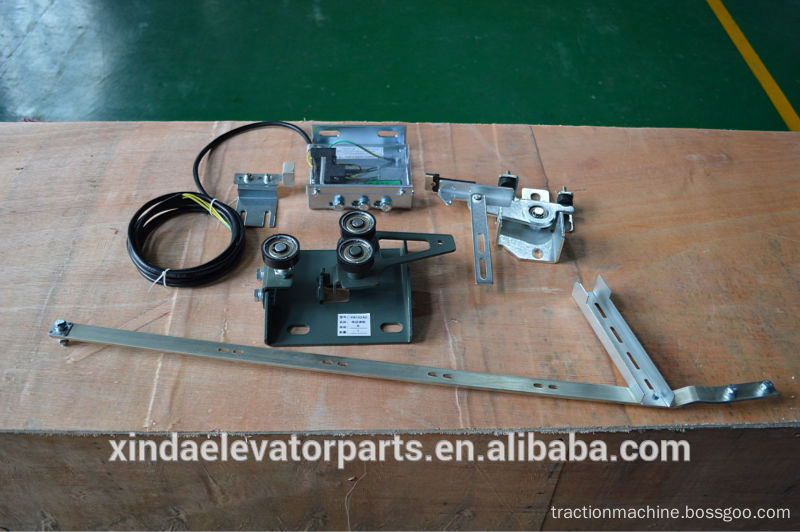Plantar fascia " inflammation " is not inflammation ( Inflammation )
Before 2013 , almost all medical articles in foreign countries considered plantar fasciitis as the fascia of the plantar fascia - especially the fascia near the heel. All treatments for this disease are also targeted at Inflammation is carried out.

But scientists have performed a biopsy of the fascial tissue of patients with chronic plantar fasciitis and found that plantar fasciitis is not an inflammation. " No inflammation was found, " according to Dr. Philbin , without any signs of inflammation in the cell tissue. Dr. Karim Khan , a professor of sports medicine at the University of British Columbia, also said that " plantar fasciitis does not involve any inflamed cells " .
Â
Instead, plantar fasciitis is more like a degeneration or weakening of tissue.
Under normal conditions, the process of exercise essentially tears tiny tissue, and the body automatically repairs the torn tissue and strengthens it, making our body stronger.
But for some reason, the degree of tearing of the tissue is greater than the ability of the body to repair, when the tiny tissue tear can not be restored, when this situation accumulates to a certain extent, the tissue begins to slowly stop growing, or even shrink, resulting in pain. .
Â
Most medical experts abroad now believe that many diseases caused by excessive exercise such as tennis elbow and Achilles tendon are the same process, not inflammation.
There are also articles in foreign countries that discuss the initial (one to two weeks) of fasciitis as an inflamed phenomenon, and the longer the period from inflammation to degeneration. This argument also makes sense, because the section study of fasciitis is based on patients with chronic fasciitis, and it is quite possible to have inflammation in the early stage. However, when the general runners wait until they begin to pay attention to fasciitis, they generally pass the previous stage and begin the process of tissue degradation and weakening.
Another foreign article reveals that some plantar fasciitis is not a problem of fascia, but a small muscle ligament strain in the fascia. But the clinical is difficult to judge.

Why do you get fasciitis?
Almost consistently all articles attribute fasciitis to the collapse of the arch caused by large / unusual foot internal / external rotation / excessive movement. I myself belong to the excessive movement and the arch of the foot collapses. The collapsed arch causes the running pressure to shift more to the fascia, causing damage to the fascia.
Â
Nowadays, with more and more articles, the deep reason behind the collapse of the arch is attributed to the current sports shoes.
Shoe front
Nowadays, the front and toes of the general sports shoes are slightly forwarded, which makes the toes in the shoes always in the upturned state, so that the fascia is unconsciously tightened. The fascia, which has been in a state of tension, is subjected to additional pulls while running, and the results are conceivable and can easily cause damage.

Shoe support
The support and protection of the sneakers does not result in the exercise of the arch, so it is best not to wear so-called protective sneakers unless you are exercising.
Both domestic and foreign forums have mentioned that the fasciitis has been cured because of barefoot or forefoot running. I used to sneer at these experiences. Now I think it is very reasonable.
Â
What should I do with fasciitis?
Traditional fasciitis treatments have proven to be not necessarily useful.
Since fasciitis is not inflamed, it is certainly not suitable for treatment based on inflammation, such as anti-inflammatory drugs, ice, steroid injections, etc. I still smeared Penethrex for a long time and made ice every day. Now, looking back, ice should play the opposite role.
Wearing sneakers usually plays the opposite role. The anterior tilt of the shoe keeps the fascia stretched and delays recovery. Additional support protection limits the exercise of other muscles on the foot.
There is no evidence that the effectiveness of night splints is actually limited by the activity of the feet, which is not conducive to tissue regeneration.
Shockwave therapy has proven to be effective in traditional methods. The shock wave is a process in which the broken tissue forces it to regenerate, thereby counteracting the degradation of the fascia. Since the shock wave is effective, it is definitely wrong to stay still. The recovery of fasciitis should focus on regeneration, not on motion.
Â
Effective self-recovery method
For the fascia, it should be given appropriate pressure to promote its regeneration process. Being stationary is not a good recovery method. Since the fascia needs to be strengthened and regenerated, all methods in this direction are effective, including promoting blood circulation in the foot, increasing the flexibility and strength of the foot, and appropriately transferring excess fascial pressure.
Specifically, the following steps are correct for fasciitis recovery.
1. When the daily walking, the center of gravity moves forward from the heel: increase the blood circulation of the heel and reduce the heel pressure;
2. Increase barefoot activity (not run barefoot): Red on various grounds to exercise the muscles and flexibility of the foot;
3. Increase the flexibility of the ankle: push the wall to exercise the ankle (traditional action);
4. Change shoes: Never wear sneakers at all times. The less support, the better. The lower the sole, the better. The flatter the toe.
5. Strengthen the fascia tissue and leg muscles: Increase the barefoot activity part to achieve this effect, in addition to the following exercises (traditional action):
a. contraction foot (蜷 toe arch): 5 seconds, 10 times a group, do 2 to 3 groups;
b. Toe grab towel: 50 times a group, do 2 to 3 groups
c. 掂 tiptoe, then slowly fall
d. Toe walking: 10 to 15 steps at a time, do 2 to 3 groups;
e. squat practice
6. Stretching (traditional action)
a. stretching the hamstrings, ankles
b. Stretching the fascia: rubbing the toes up
7. Massage: step on tennis or pedicure to increase local blood circulation
8. Soaking hot water feet: increasing blood circulation
When fasciitis is just beginning, it is best to rest for two weeks. When it lasts for a few months, it is best to actively perform the above exercises to achieve the best recovery.
Since the fascia needs proper pressure to regenerate, some people say that his " fasciitis is good " is possible, but can the fasciitis be able to run before he recovers? There are also articles in foreign countries that mention jogging to cure fasciitis, but there is no article with quality that really recommends that fasciitis should go to run before healing. The key is that each individual has different resilience. For most people, running during fasciitis may cause excessive pressure on the fascia, but it will delay the recovery.
Finally, summarize:
·          Fascia " inflammation " is not inflammation;
·          Active practice is better than rest;
·          Don't worry too much, " Leave a green hill, don't be afraid of burning wood. "
product
- ADD03011 door machine controller for door operator Panasonic
- M0000046 Aluminum wheel for landing door device elevator door roller
- PB307C door lock for door machine/operator door lock elevator part
- PB307B door lock for door machine/operator door lock elevator part
- TNG-012 photo-electronic switch for door machine elevator door parts
- Complete PB152A door lock for landing door device door lock elevator parts
Specifications
- Made of Iron
- Safety part
- For landing door device


Elevator Door Lock, Elevator Door Key, Elevator Door Operator, Elevator Door Lock Mechanism, Elevator Door Opening
Ningbo Xinda Elevator Traction Technology Co., Ltd. , https://www.xinda-elevator.com
